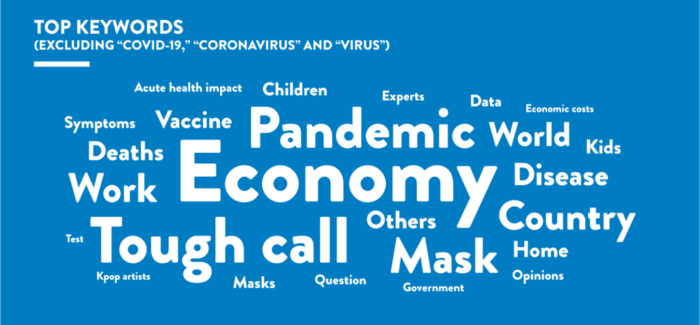About 93 percent of online experiences begin with a search engine. When consumers go online to find a product, service, or a company, they start with a search, and at the moment Google is the biggest search engine in the world with a 92.05 percent market share.
If you’re a digital marketer or you want to amplify your online presence, then you’re aware that SEO is the way to go, especially if you’re after higher website rankings and organic traffic. However, with hundreds of ranking signals and thousands of algorithm updates, it can be difficult to ace.
With more than one billion websites worldwide and thousands of pages being created every day, staying on top can be challenging — even to the most experienced SEO professionals.
But success isn’t impossible, especially if you know where to put your efforts.
Steps to Effective SEO

The Pareto Principle or the 80-20 rule asserts that 80 percent of outcomes are the result of 20 percent of the cause. The approach tells us that we need to focus on the most important aspects to maximize results.
The best SEOs not only know what the best SEO tools are, but what activities will bear the biggest impact.
Let’s look at techniques and formulas that will help you maximize your productivity and results when it comes to ranking your website.
1. Narrow Down Your Keywords
Every effective SEO strategy starts with keyword research. A keyword result can number in the thousands, and not all of them are going to deliver the results you need. So it’s best to consolidate your keywords and not waste your efforts on ones that will bring you the traffic or conversions.
Narrow down your list by:
– Evaluating which keywords matter for your pages, or which keywords you want to rank for. Once you have narrowed down the list of important keywords or key phrases, then it’s time to group them.
– Making sure that there’s no keyword cannibalization. You can prevent this by grouping all keywords according to search intent. Keywords tackling the same content or those that have the same search intent should be grouped together.
There are three types of search intent:
- Navigational – The user’s intention is to find a certain location.
- Informational – The user wants to find information to gain knowledge or be educated about a particular topic.
- Transactional – The user’s intention is to buy or make a purchase.
Once you have grouped your keywords, it’s time to incorporate them into their corresponding pages.
2. Optimize Headers
Focus on optimizing your headers. Headers are important in optimizing user experience, an important core web vital update that Google decided to implement this year.
Make your headers easy for people and search engines to understand. This will also highly impact your SEO ranking.
In optimizing your header, you need to:
- Incorporate your keywords into your H1 or the page title
- Make sure to properly label your heading (H1-H6)
- Write headers as if you’re answering a question or a user’s query
- Use numbers or list form for blog posts
Google crawlers use headers to learn more about the page. Structure your content to make it scannable for crawlers.
3. Don’t Forget Image Alt Tags
Google can’t view images the way you do. Help it understand what your images are all about and how they’re related to your content by providing image alt tags. The alt tags should always relate to the content of the image. The website will display the alt text whenever the image doesn’t load.
The best optimization practice is to incorporate keywords into the alt text. But careful not to make it spammy. It’s important to give clear descriptions and avoid generic or vague ones.
4. Optimize Page Speed
A page that loads longer than 3 seconds will cause the user to bounce. Speed is important. The faster all the elements in a page load, the better.
Speed up your web pages with the following tips:
- Minimize image file sizes. There are tools like TinyPNG that allows you to resize images without installing an application.
- Avoid overloading a site with javascript (or any unnecessary elements for that matter)
- Reduce redirects
5. Have a Mobile Friendly Site
More than 60 percent of the global population use the internet, and around 92.8 percent of users access the web through their mobile devices. Google implementing mobile-first indexing makes a lot of sense.
Since more people are now using their mobile devices to access the internet, Google decided to base their indexing and ranking on the mobile version of a page’s content.
Here are some tips to make sure that Google can access your content flawlessly:
- Use similar meta robot tags on both the desktop and mobile site. Using different meta robot tags on desktop sites (like “noindex” or “nofollow”) can cause Google to fail in crawling and indexing your pages when your site is enabled for mobile-first indexing.
- Avoid lazy-loading primary content.
- Allow Google to crawl your resources. Most resources contain different URLs on the mobile site than those seen on desktop. For Google to crawl URLs, double-check that you don’t have the “disallow” directive activated.
- Make sure that your website is responsive and appealing no matter what device is used.
These are just some of the best practices that you can do to provide a mobile-friendly site for your users. You can get more details on Google’s mobile-first-indexing guidelines; review the guide to see if you missed anything.
Less Is More

In some cases, the less complicated process is often better understood and can lead to a more productive output.
Think of your website as a customer magnet, and review basic elements that will make a huge impact on SEO and customer experience. It can be page speed, better content, better site structure and in some cases, better design. Since it’s more challenging to physically meet your customers, your website now becomes your virtual business card. Make sure that it’s not only attractive but easy to use as well to every visitor that clicks.
No website is perfect from the get-go. Every design, every page, will always need tweaking or updating. Always be on the lookout for improvement, and start with the things that will make the most contribution to your website rankings.
Find a Home-Based Business to Start-Up >>> Hundreds of Business Listings.

















































